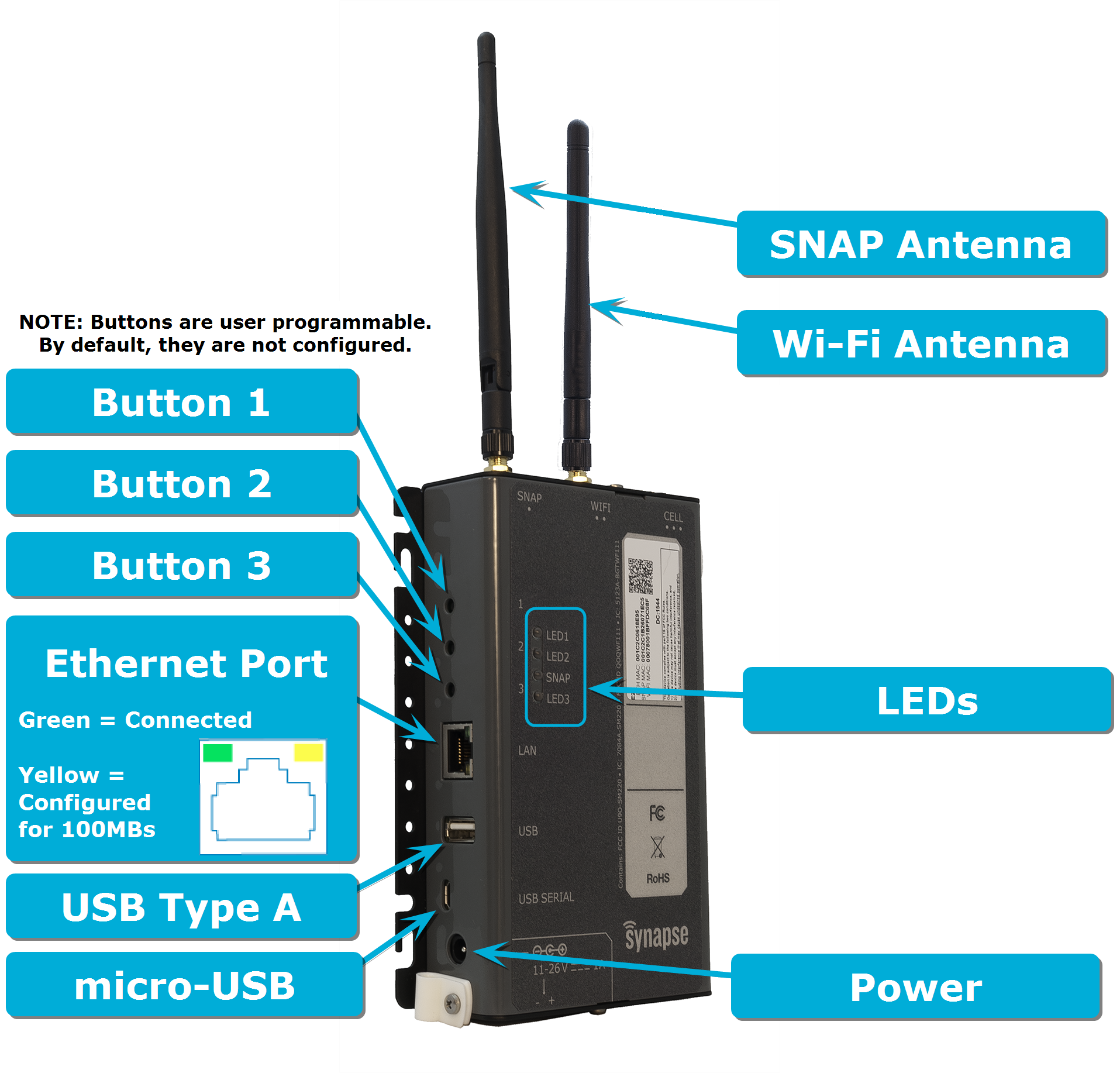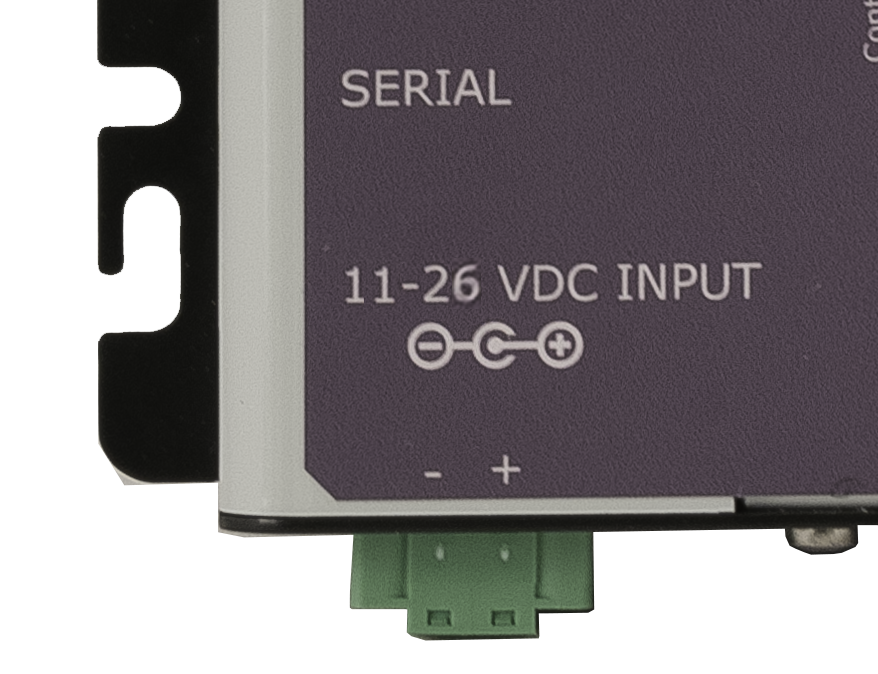Hardware Setup¶

Connecting the Antennas¶
The SNAPconnect E20 will have a few antennas, as shown above. You can determine which antenna should go on which RP-SMA connector on the SNAPconnect E20 based on the number of dots under the label on the gateway (one for SNAP, two for Wi-Fi) matching the number of dots marked on the included antennas.
Warning
The E20 is an ESD sensitive device. Please use proper ESD precautions when handling the SNAPconnect E20.
When the antenna is not connected, it is recommended to attach a 50 OHM Terminator plug RP-SMA (part number 132360RP from Amphenol).
When it is time to attach the antenna, touch a grounded surface, remove the 50 OHM Terminator and screw on the antenna tightly. Do not overtighten or the RF pin in the bulkhead will crack, creating poor RF link quality.
Powering the E20¶
The E20 is powered by DC sources with output voltage in the range of 11V–26V and supplying at least 1A. The E20 has two provisions for supplying the DC input to the unit:

The 2.0mm center-positive mono jack connector at the bottom of the left side
The green terminal block connector on the bottom of the unit
The 2.0 mm center-positive mono jack connector on the side of the unit is typically used when powering the E20 using an external AC/DC power adapter. When powered by the mono jack, the DC input connector on the bottom of the unit is physically disconnected internally.
Use only UL 60950-1 2nd Edition AM1+AM2 Certified LPS Power Supplies, rated for the relative environmental conditions suited to your use location with an output of 11-26VDC, 1A Max. If you’re applying power via the terminal block, the positive and negative terminals are marked on the front label of the unit (see image to the right). The terminal block header that connects to the E20 requires 14-30AWG wire. (The terminal block header is part #1900882 from Phoenix Contact. See their website for more info.)
The DC source should be a SELV source in accordance with IEC 60950-1, properly certified by the relevant authorities in your location, having ratings suitable for the environmental conditions of the installation.
Warning
All DC wiring should be done in accordance with all relevant local and national wiring regulations and should be protected by a suitably rated fuse or circuit breaker sized according to the relevant wiring codes. The maximum interrupting rating of the overcurrent protective device is not to exceed 8A.
Use only AC/DC power adapters that are properly certified by the relevant authorities in your location, having ratings suitable for the environmental conditions of the installation.
Note
If the E20 is installed into an end product, wiring should be done in accordance with the relevant product safety standard of the end product.